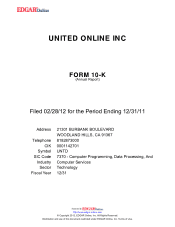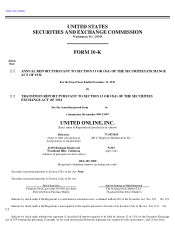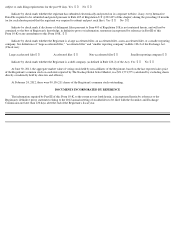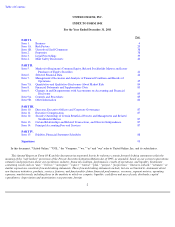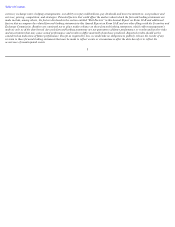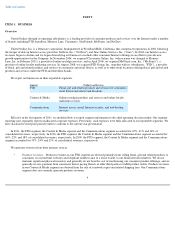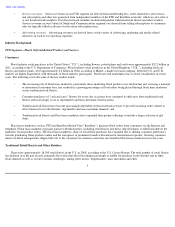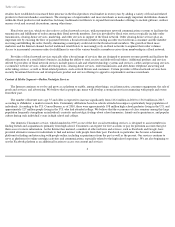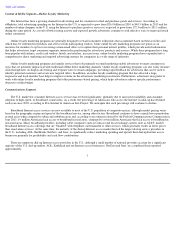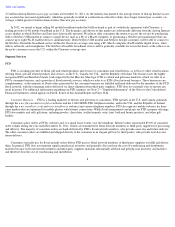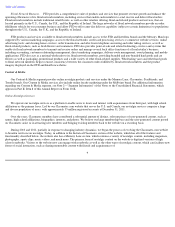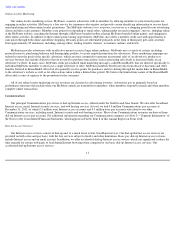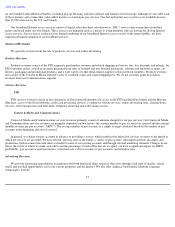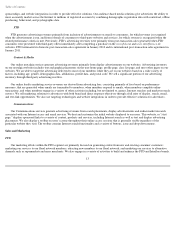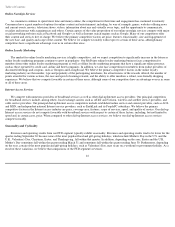NetZero 2011 Annual Report Download - page 9
Download and view the complete annual report
Please find page 9 of the 2011 NetZero annual report below. You can navigate through the pages in the report by either clicking on the pages listed below, or by using the keyword search tool below to find specific information within the annual report.
Table of Contents
Content & Media Segment—Online Loyalty Marketing
The Internet has been a growing channel for advertising and for consumers to find and purchase goods and services. According to
eMarketer, total advertising spending on the Internet in the U.S. is expected to grow from $26.0 billion in 2010 to $49.5 billion in 2015 and the
number of online shoppers in the U.S. using the Internet to purchase goods or services is expected to grow from 172.3 million to 201.1 million
during the same period. As a result of both existing activity and expected growth, advertisers continue to seek effective ways to target and reach
online consumers.
Online loyalty marketing programs are generally designed to reward consumers with points that accumulate based on their activities and
which may be redeemed for products and services from participating vendors. Some online loyalty marketing programs use points as an
incentive for members to opt in to receiving certain email offers or to update their personal interest profiles, which provide useful information
that helps advertisers target consumer segments interested in purchasing the advertisers' products and services. While these programs have long
been popular with airlines, credit card vendors, hotels, and retailers, in recent years, online loyalty marketing programs have expanded into a
comprehensive direct marketing and targeted advertising strategy for companies in a wide range of industries.
Online loyalty marketing programs and similar services that rely primarily on email marketing enable advertisers to target consumers in
ways that are generally impractical with traditional offline direct marketing channels. Online loyalty marketing programs can also easily measure
click-through rates on display advertising and response rates to email campaigns, providing rapid feedback for advertisers that can be used to
identify potential customers and create new targeted offers. In addition, an online loyalty marketing program that has attracted a large,
responsive and loyal member base helps to improve returns on the advertisers' marketing investments. Furthermore, advertisers may prefer to
work with online loyalty marketing programs that offer performance-based pricing, which helps advertisers achieve specific performance
objectives within budget.
Communications Segment
The U.S. market for consumer Internet access services has evolved significantly, primarily due to increased availability and consumer
adoption of high-speed, or broadband, connections. As a result, the percentage of Americans who access the Internet via dial-up has declined
each year since 2002, according to Pew Internet & American Life Project. We anticipate that such percentage will continue to decline.
Broadband Internet access services are now available to most of the U.S. population at competitive prices, although market pricing varies
based on the geographic region and speed of the broadband service, among other factors. Broadband continues to have a much lower penetration
in rural areas when compared to urban and suburban areas and, according to an estimate released by the Federal Communications Commission in
June 2011, 19 million Americans lack access to broadband in rural areas, compared to seven million Americans that lack access to broadband in
non-rural areas. Many broadband providers, including cable companies such as Comcast and local exchange carriers such as AT&T, market
broadband Internet access offerings that are "bundled" with telephone, entertainment or other services, which generally results in lower prices
than stand-alone services. At the same time, the maturity of the dial-up Internet access market has led the largest dial-up service providers in
the U.S., including AOL, EarthLink, NetZero, and Juno, to significantly reduce marketing spending and operate their dial-up Internet access
businesses primarily for profitability and cash flow contributions.
There are numerous dial-up Internet access providers in the U.S., although a small number of national providers account for a significant
majority of the U.S. dial-up market. AOL, EarthLink and our Internet access businesses, NetZero and Juno, on a combined basis reported
approximately
7

